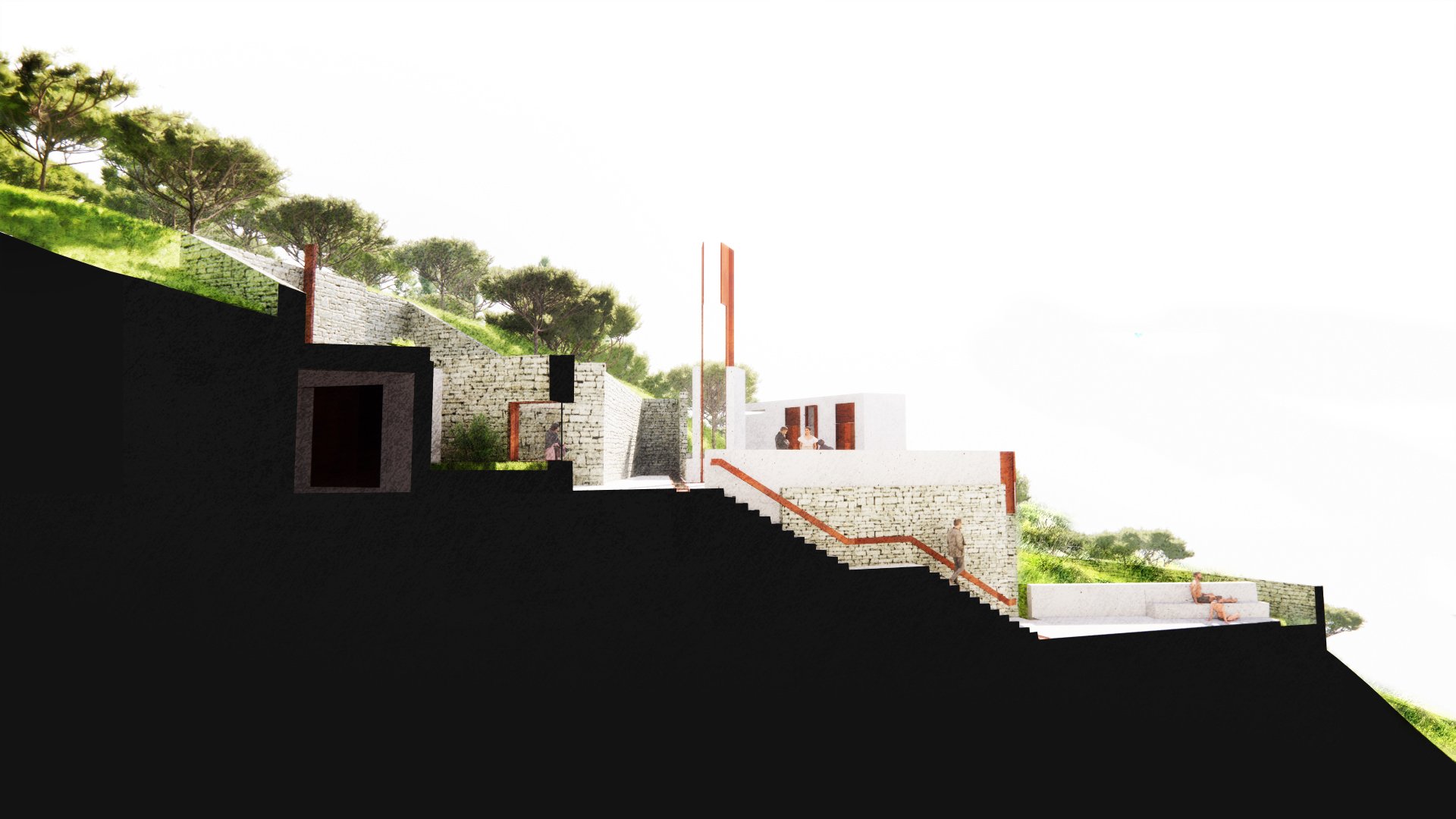
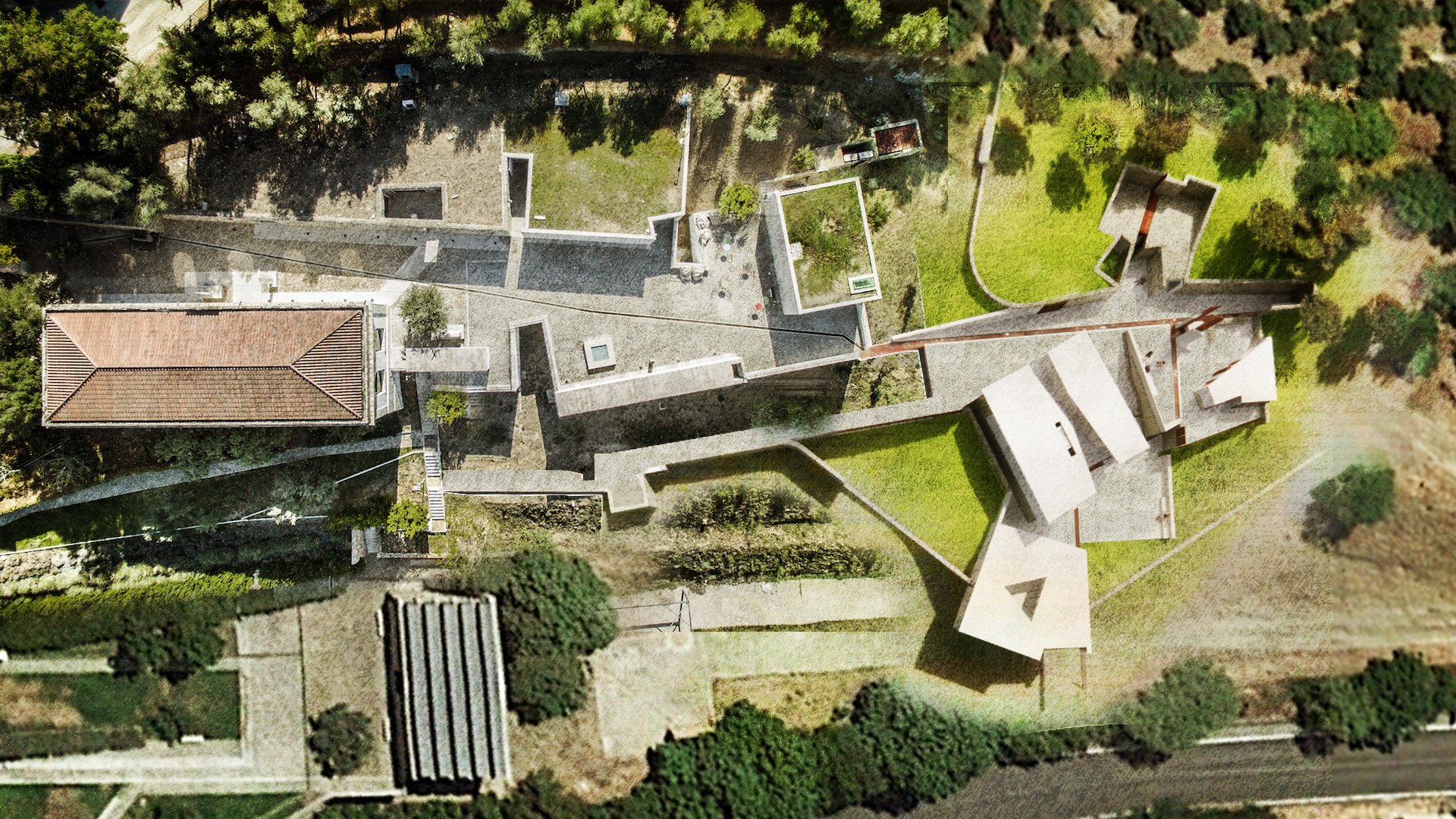

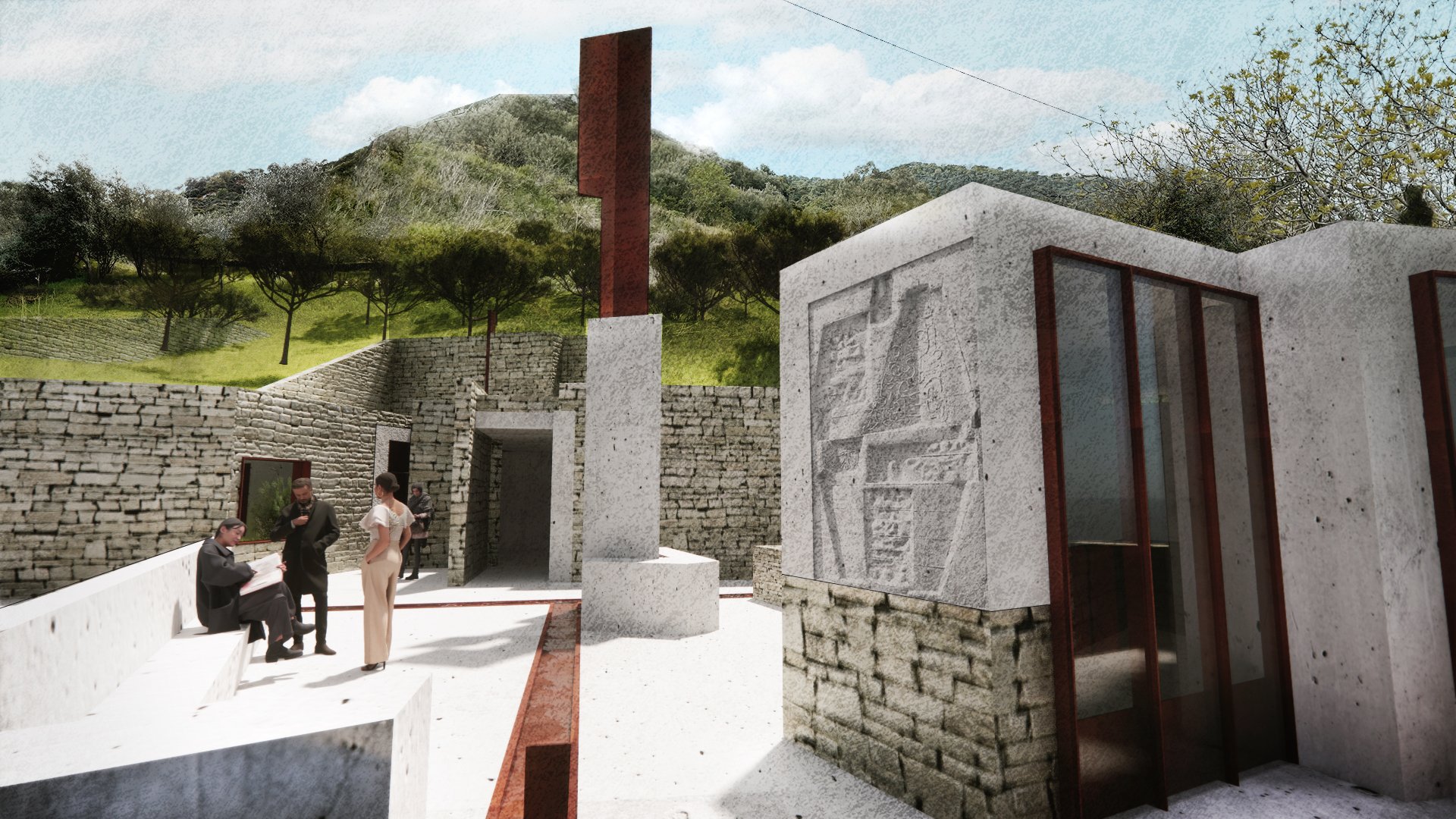





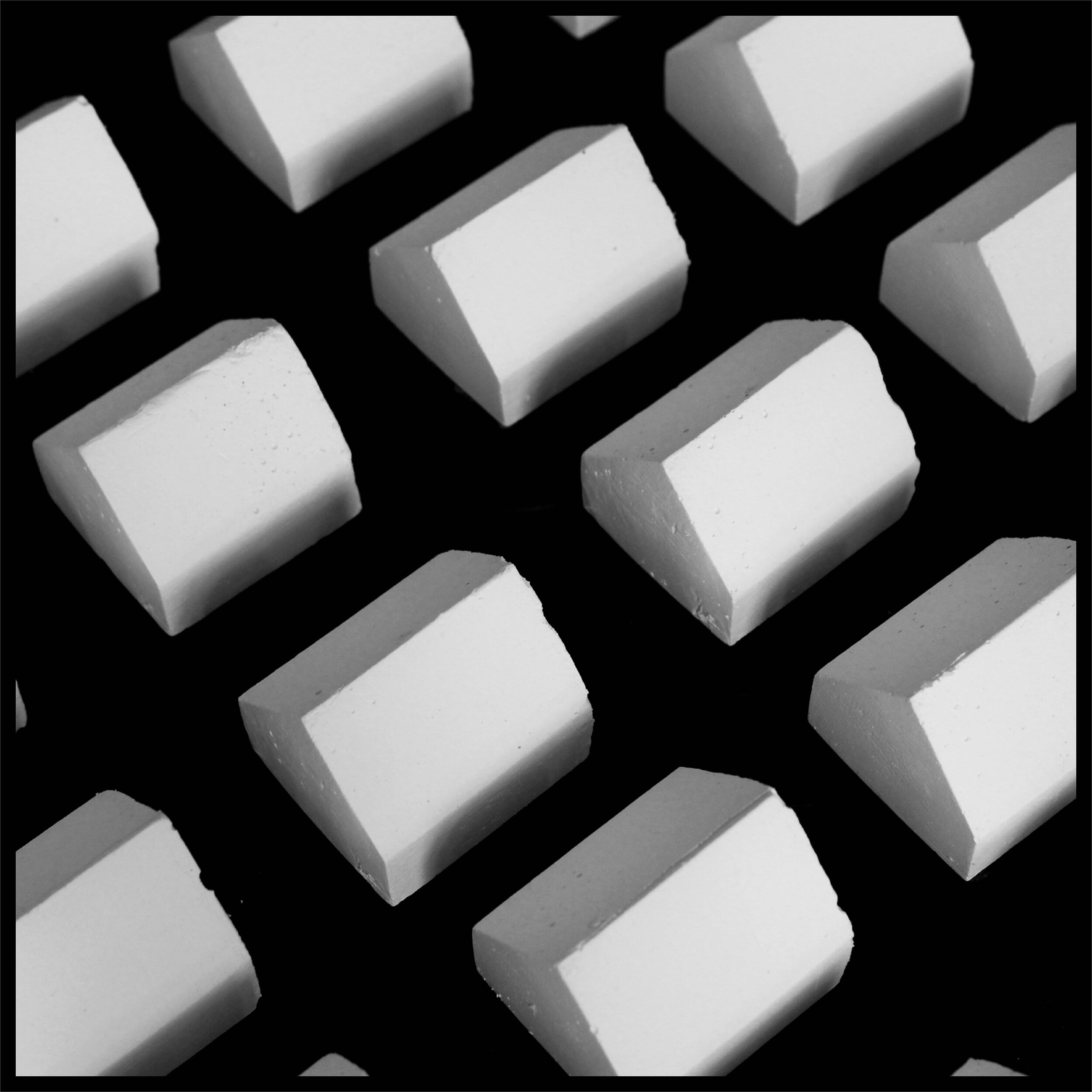


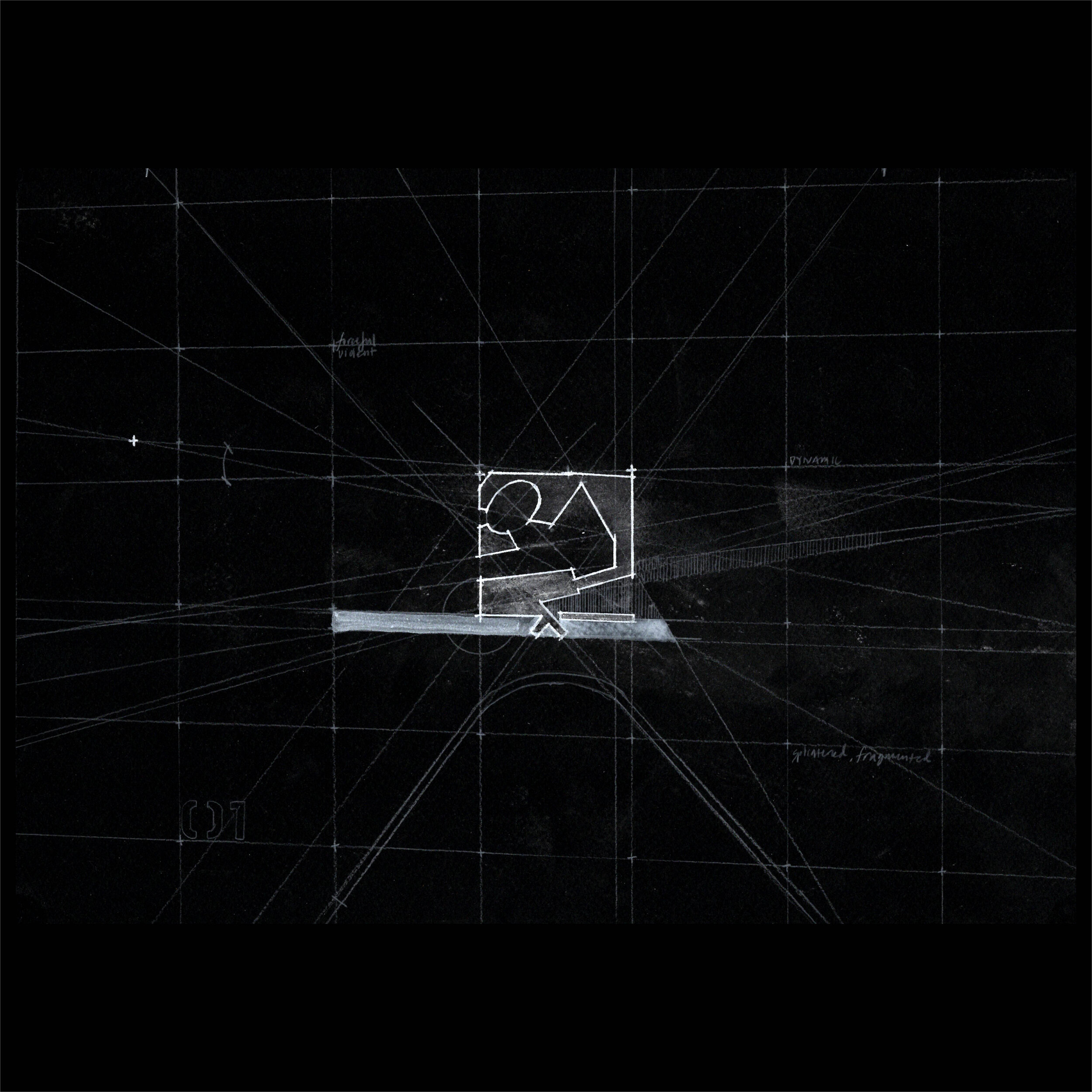


Living Museum
Competition
2021
This project adds to the existing Nivola Museum a series of dwelling units that offer tourists, artists-in-residence, and other visitors the chance to experience the museum in a new way. By providing places to stay and dwell amongst the museum grounds, the Nivola Museum would incubate a greater cultural link between the historical work of Constantino Nivola and the city of Orani.
Our contemporary world is fractured, impacted, and shattered every day by newer, harsher truths. I seek to create spaces where peace can be found within the remains of a fractured world. I seek to build responses to the energy and changing values of our time.
Taking the formal language of home as an image and casting it repeatedly is a means to create multiple homes. This conceptual reference point relates us to memories of comfort, of respite, and of who we become once we leave our homes, vulnerable to the world. Each cast model was forcefully shattered, and the impact of the force pushes the plaster into the thick black paper.
The goal is to create meaningful and beautiful architecture using the imprinted geometries, reconstructed directly from disastrous events
Through casting I could begin the process of making architecture connected to Nivola’s form-making process.
Conceptual Guidelines
Continue the morphology and morphological legacy of the site and the town of Orani from Ancient times until the present in the manner that Gianfranco Crisci adopted the narrow openings and topographical relationship of the addition to the Nivola Museum.
Continue the material tradition of local stone mining, stone, white plaster, clay, glass, and black metal.
Respond to our contemporary cultural context as a fragmented, disjointed, resultant of the multiplicities of histories, information, culture, globalization, and technology.
Utilize the geometrical splits, cleaves, shears, and shattered remains that reflect the impact of the forces above, as well as the other resultant vectors and operations that arise from the imprinted studies.


